Transat Jacques Vabre: Imoca Podium Decided
Published on November 19th, 2017
(November 19, 2017; Day 14) – Jean-Pierre Dick and Yann Eliès on St Michel-Virbac, have won the Imoca class of the 13th edition of the Transat Jacques Vabre after crossing the finish line in the Bay of All Saints in Salvador de Bahia on Saturday, November 18, 2017 at 20:11:46 (UTC), 13 days 7 hours 36 minutes and 46 seconds after leaving Le Havre, Normandy, France.
St Michel-Virbac covered the theoretical course of 4,350 nautical miles at an average speed of 13.63 knots but actually sailed 4,652 nautical miles at an average speed of 14.55 knots.
On his 60ft foiling monohull, Dick became the only sailor in the history of this bi-annual double-handed Route du Café, in any class, to have won four times. The 52-year-old skipper from Nice won the Imoca class in 2003, 2005 and 2011.
St Michel-Virbac also established a new record time for the Imoca class to Salvador with Dick beating his own record of 13 days 09 hours 19 minutes and 2 seconds set with Loïck Peyron on Virbac-Paprec in 2005 by 1 hour 42 minutes and 16 seconds.
Dick recalled today that was his first Transat Jacques Vabre win in 2003 into Salvador de Bahia in 2003, that really announced his arrival as a serious contender in the sailing world. It was a first victory for Eliès in the Imoca class, after his Multi50 win in 2013.
After leaving Le Havre on Sunday, November 5, at 12:35 UTC, St Michel-Virbac has led since the early morning of Tuesday, November 7 as they crossed the cold front that battered the fleet as the passed the Bay of Biscay. One of six latest generation foiling Imoca in the race, it was actually the older generation, foil-less SMA that has proved St Michel-Virbac’s toughest challenger.
That was something the two French sailors, Dick and Eliès, predicted before the start of their training partner, and SMA closed to within 28 miles in the Doldrums before of St Michel-Virbac escaped first and extended as the headed down the coast of Brazil.
After seasoned campaigners, Jean-Pierre Dick and Yann Eliès arrived in Salvador de Bahia to win the 13th edition of the Transat Jacques Vabre in record time, and with Dick claiming an unprecedented fourth title, the podium places were completed today (Sunday) by the next generation duos on SMA and Des Voiles et Vous.
Behind them are the races within the race that characterize the different preparations, aspirations and generations of crew and boats left in the fleet. The Class40 is shaping up to be even closer race than the three classes before them, with a lead three separating overnight. The Anglo-Spanish pair of Phil Sharp and Pablo Santurde (Imerys Clean Energy) still lead, but the 20 miles they earned yesterday at the end of the Doldrums has evaporated before the Equator with less than 10 miles between all three again.
Imoca
Winner: St Michel-Virbac (Jean-Pierre-Dick / Yann Eliès), finished Saturday, November 18 at 20:11:46 in 13 days 07 hours 36 minutes 46 seconds.
Second: SMA (Paul Meilhat and Gwénolé Gahinet), finished Sunday, November 19 at 02:33:03; 6h 21min 17secs after St Michel-Virbac
Third: Des Voiles et Vous! (Morgan Lagravière and Eric Peron), finished Sunday, November 19 at 14:06:44; 17h 54mins 58 secs after St Michel-Virbac
Dick revealed that they had lost their big spinnaker after Cape Verde, but were able to stay ahead without it. For his part, Meilhat said that they could not have done more to catch their training partners, but that both he and Gahinet were proud of the their race.
The Imoca peleton are all in the south-east trade winds. Their road will be dotted with squalls. Those leading tight battles such as Bastide Otio, who are still holding off the theoretically faster Initiatives-Cœur, will want a good cushion having been reminded of how complicated and windless the arrivals into the Bay of All Saints have been, particularly at night.
ETAs
Malizia II, Monday, November 20, 11:00 (UTC)
Bastide Otio, Initiatives-Cœur, 23:00
Bureau Vallée, Tuesday, November 21, 10:00
La Fabrique, Generali, Vivo a Beira, 10/11/12
Class 40
ETA: The leaders, Thursday, November 23, 02:00 UTC
The Class40 lead trio have 900 miles to the finish and are averaging 10 knots in a well-established south-east trade wind. Anglo-Spanish pair of Phil Sharp and Pablo Santurde (Imerys Clean Energy) is ahead but his French pursuers from the start in Le Havre, Aïna Enfance et Avenir and V and B, have closed the gap and in their newer boats are theoretically faster in these conditions.
Having been caught up in the Doldrums, TeamWork40 and Région Normandie Junior Senior by Enernex have slipped back and are 50 miles off the lead.
Those behind face the Doldrums, but they have contracted and look a little simpler to cross than last week.
Multi50
Last arrival
La French Tech Rennes Saint-Malo (Gilles Lamire and Thierry Duprey Du Vorsent), finished Sunday, November 19 at 23:47:03, 2 days 15 hrs 57 mins and 44 secs after the winner, Arkema.
Quotes from the Sailors
Jean-Pierre Dick, skipper of St Michel-Virbac (Imoca)
This is the perfect race that I’d imagined with Yann. It’s amazing to be have been able to realize it. A fourth victory is great. I like this race, the duo side of it.
Paul Meilhat, skipper of SMA (Imoca):
We have no regrets, we feel like we have sailed well, but they (St Michel-Virbac) made the right choices too. We’re proud to be second behind them. It’s not because they have foils they’ve won.
Yann Eliès, co-skipper of St Michel-Virbac
I’m proud of the line that we’ve drawn. We traced a beautiful route, that’s curved, and sometimes, sometimes perfectly straight. Paul Meilhat (skipper of second-placed SMA) recognized it in one of the race interview sessions, he said we’d made best course, that’s a really nice thing to have said.
Gwénolé Gahinet, co-skipper of SMA (Imoca):
At first, we didn’t see each other much. We helmed a lot and as soon as we could, we slept. We avoided the mistake of not sleeping enough. We had a good level of intensity and care; we never shouted.
Race details – Entry list – Tracker – Facebook
13th edition of the Transat Jacques Vabre
• Biennial doublehanded race now 24 years old
• Two founding partners: the city of Le Havre and brand Jacques Vabre
• Four classes on the starting line: Class40, IMOCA, Multi50, and Ultimate
• Starting November 5 in Le Havre (FRA) for the 4350nm course to Salvador de Bahia (BRA)
n 2013, and again in 2015, all the boats flew past Salvador de Bahia, sails filled by the trade winds of the south-east, under the tropical sun…One imagines that they dreamt of finally finishing their race in All Saints’ Bay. In 2017, it will be a reality!
After the start line and a coastal route as far as Etretat, the duos will head towards Brittany to get out of the Channel as quickly as possible, where the currents are powerful, cargo traffic dangerous, and a lot of attention is needed.
They will then enter the Bay of Biscay, where, depending on the position of the Azores anticyclone, they will either find downwind conditions, easy and fast, like for the last Vendée Globe, or tougher and slower conditions in the passage of some late autumn depressions.
Four hundred miles later, having passed Cape Finisterre, the northern Portuguese trade winds should propel them quickly towards Madeira, and then the Canary Islands, where awaiting them will be northeast trade winds, which could be strong or weak.
Passing close to the Portuguese coast, or offshore, to the east or west of the Canary Islands and then the Cape Verde islands – you have to choose the right options. The next goal is to establish your position for the crossing of the dreaded Doldrums, located a few degrees north of the equator. At this time of year, it can change position very quickly, extend or contract, because even after carefully studying of the satellite images, sudden squalls can develop and stall the competitors under a good shower without wind for hours.
This passage is crucial in the Transat Jacques Vabre racecourse. Further west… Further east… After the calms, rainy squalls, with too much or no wind… The final goal is to get out well-positioned enough to benefit first from the southeast trade winds and to cover the remaining 850 miles towards the finish,passing along the islands of Fernando de Noronha, along the coast of Brazil and finally heading northwest into the magnificent All Saints’ Bay.
This transoceanic racecourse from North to South is more demanding than a transat from East to West; it requires the skippers to have sharp tactical and strategic qualities, good weather training, to be in excellent physical condition to maintain a sustained speed in the trade winds… And to have a lot of patience to cross the equator.
Source: Transat Jacques Vabre


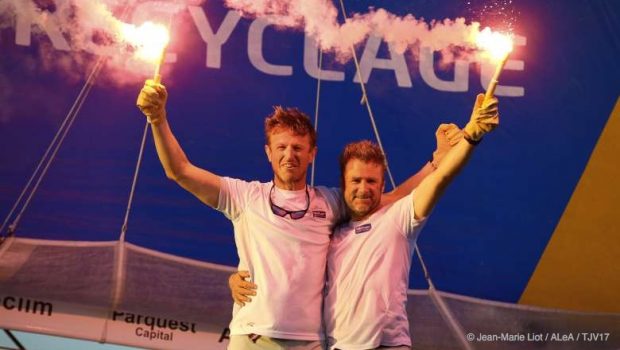

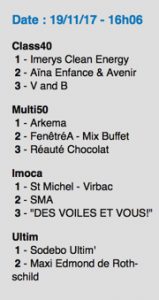
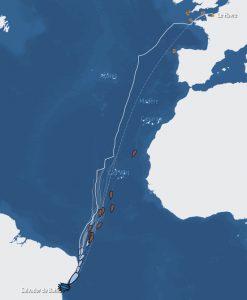
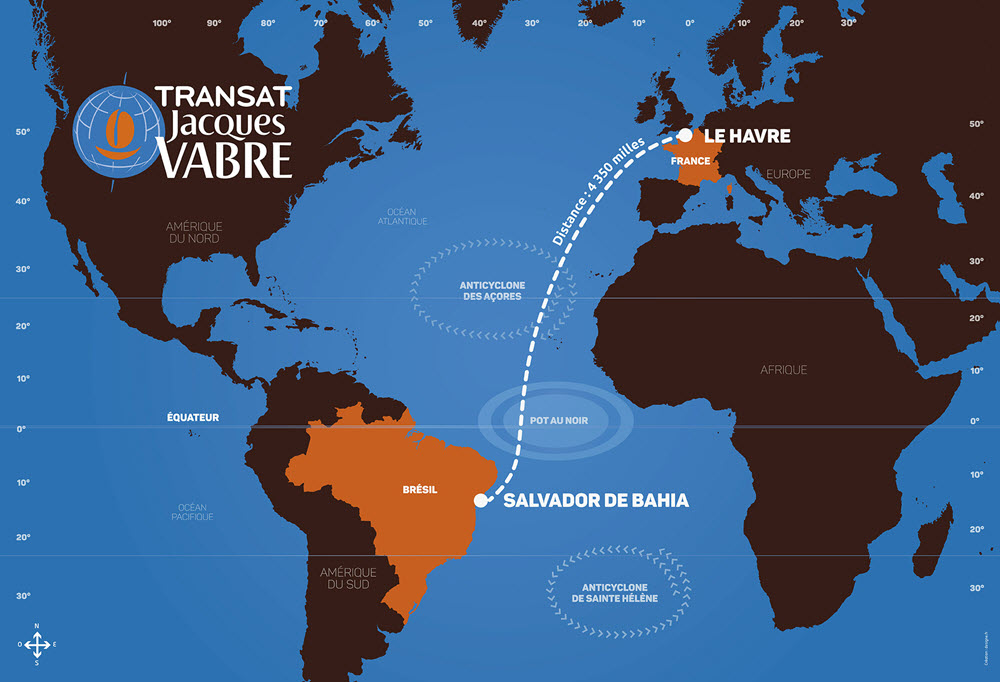

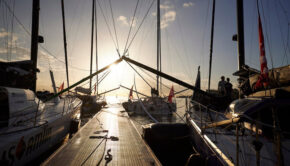
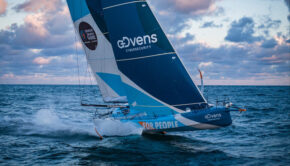
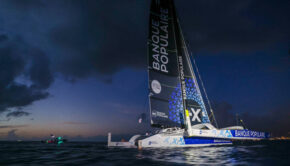
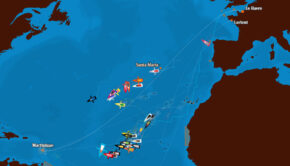
 We’ll keep your information safe.
We’ll keep your information safe.